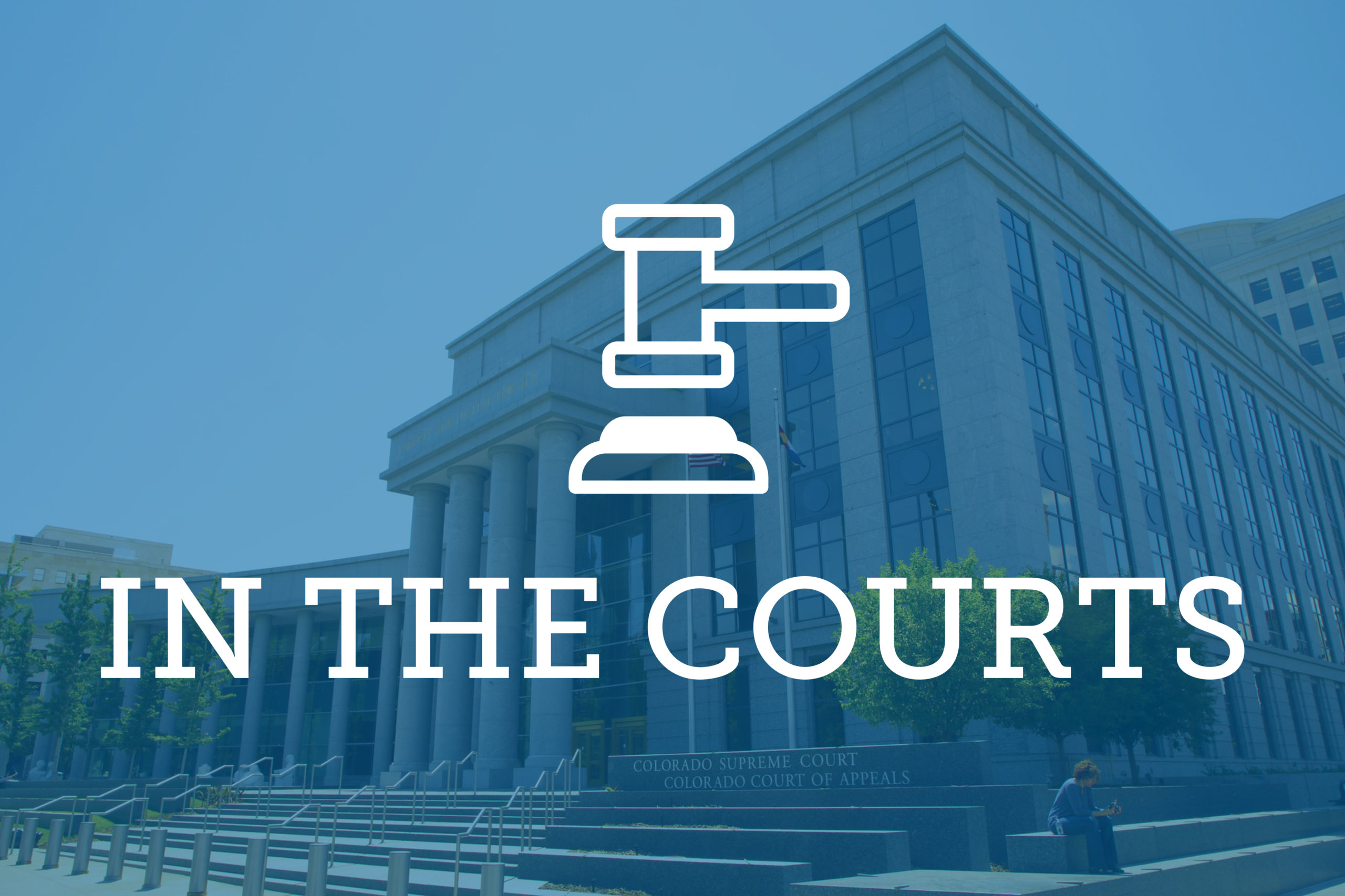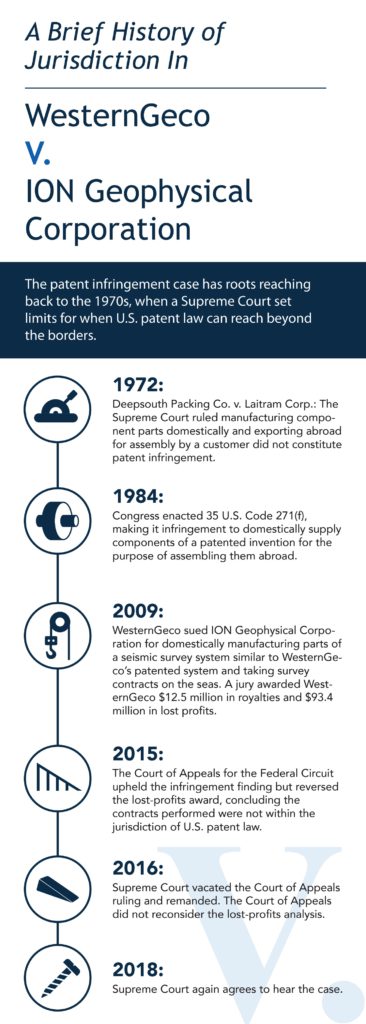

The U.S. Supreme Court will, for the second time, consider WesternGeco v. ION Geophysical Corporation, which has subverted legislation about jurisdictional boundaries of patent law.
In WesternGeco, the court has to decide whether to overturn a decision from the Court of Appeals for the Federal Circuit and rule that WesternGeco can recover profits lost overseas from ION’s infringement of its patented seismic survey system.
Although the case involves a specific statute, intellectual property attorneys postulated that the Supreme Court’s eventual decision could have a broad effect across industries. It brings to issue 35 U.S. Code 271(f), which made it infringement to domestically supply components of another’s patented invention for the purpose of assembling the parts abroad into the finished mechanism.
Merchant & Gould partner Dan McDonald said he believes the decision might have broad implications. His view echoed U.S. Solicitor General Noel Francisco’s amicus brief, which outlines the likelihood of the case’s key issues recurring. As McDonald explained, the Federal Circuit has also made prior rulings against recovering lost profits abroad stemming from a domestic infringement, which Francisco argued were also wrong.
“If that happens, this case has implications much beyond this specific sort of infringement that is at issue in WesternGeco,” he said. “This could apply to just about any sort of infringing activity where the patent owner can show that because you infringed here in the U.S. somehow, that led to [a company] losing sales or otherwise being damaged due to activity [outside the U.S.].”
Congress enacted 271(f) in 1984 in response to the Supreme Court’s 1972 decision in Deepsouth Packing Co. v. Laitram Corp, in which the court ruled manufacturing component parts domestically and exporting them abroad for the purpose of assembly by a customer did not constitute patent infringement. In 2009, WesternGeco sued ION for domestically manufacturing parts of a seismic survey system similar to WesternGeco’s patented system and taking survey contracts on the seas. A jury awarded WesternGeco $12.5 million in royalties and $93.4 million in lost profits for 10 survey contracts the company otherwise would have received.
In 2015, the Federal Circuit upheld the infringement finding but reversed the lost-profits award, concluding the contracts performed were not within the jurisdiction of U.S. patent law. The case first came before the Supreme Court in 2016, and the court vacated the Federal Circuit ruling and remanded. However, the Federal Circuit did not reconsider the lost-profits analysis.
McDonald said he believes a key criterion for determining whether the Supreme Court’s potential ruling in WesternGeco applies to a given industry will be whether an infringer’s activities in the U.S. tie in with customers’ decisions to use the technology abroad. The decision might have broad application to industries that widely standardize their technology, such as telecommunications or computers, or those that employ exacting processes that require consistency. McDonald used microchips as an example.
“There’s an example where somebody could show you infringed in the U.S., but that also led to standardization all over the world, so all these other sales fell into place after you made this decision to use my patented technology here in the U.S.,” he said.

Sheridan Ross partner Rob Brunelli said he believes 271(f) has enshrined a basic economic rule by outlining what kind of foreign activity would constitute infringement of a U.S.-held patent.
“That’s why I have a problem with the way the Federal Circuit decided this case,” he said. “Congress made a specific rule for infringement based on economic realities and then [the court] is stripping out the economic realities, which makes no sense.”
Brunelli echoed McDonald’s view that the Supreme Court’s eventual decision is likely to apply to a broad swath of industries that involve patented inventions. The circuit court’s decision subverts Congress’ intentions, he said.
“I think what the Supreme Court is looking at is that Congress doesn’t take things up for fun,” he said. “They were trying to address an economic issue, and stripping the economic value out of this particular type of infringement is not what was intended by Congress.” Brunelli explained that beginning in the mid-2000s, the Supreme Court began intervening in patent law cases to mitigate Federal Circuit decisions based on highly technical rules. McDonald said he believes Francisco’s comparison in his brief to the “predicate act” doctrine of copyright law, which holds that a copyright owner can receive damages for international exploitation of domestic infringement, is compelling.
“He’s raising this point that what the Federal Circuit is doing in patent cases is kind of inconsistent is contrary to what’s going on in the copyright side,” he said. “Patents and copyrights aren’t exactly the same thing, but there are a lot of similarities. They’re both forms of intellectual property, and if somebody takes it, it’s unlawful if it’s done in the U.S.”
McDonald said the Supreme Court’s future decision could potentially open up future cases to the option of showing alternative damages other than royalties or lost profits.
“Typically that’s been pretty hard to get in court, but if the Supreme Court adopts this concept that causation is the core concept here that’s required, [then] if you can show infringement, any damages that naturally flow from that and that are foreseeable, they could be recoverable,” he said. “So I think that could crack the door open a little bit for even other types of damages that a patent owner might be able to show.”
—Julia Cardi

